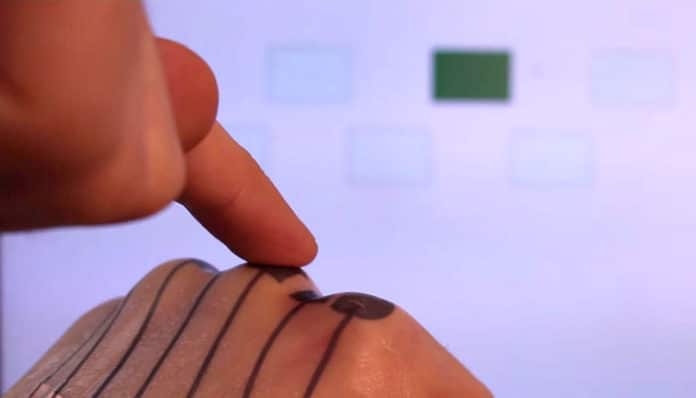Many people have tattoos, but hardly anyone thought to apply them not only from an aesthetic but also from a practical point of view.
Google, with the support of scientists from Saarland University in Germany, is working on a high-tech temporary tattoo that basically turns your skin into a fully-functional touchpad. The project, called SkinMarks, has been developed since 2017 and seeks to boost the use of electronic devices through natural movements of the human body, such as touch and gestures similar to those used on cell phones and tablets.
SkinMarks tattoos are made using screen printing technology and conductive ink transferred to tattoo paper. The result is then heat-treated to prevent deformation and can be applied to the skin. The tattoos are packed with sensors and are thin enough to adhere to curved areas of the body such as the knuckles. The sensors are able to react to a squeeze or bend of the finger out of the way.

Through a vastly reduced tattoo thickness and increased stretchability, a SkinMarks is thin and flexible enough to adapt to irregular geometry, like flexure lines and protruding bones.
A published report on the smart tattoo states, “The human body has various types of landmarks which are distinct from their surroundings. It offers unique possibilities for interaction due to their tactile properties and visual appearance. For example, protruding skeletal landmarks, like the knuckles, provide physical affordances for touching and circling around them.”
SkinMark implementation is based on the emerging stream of skin electronics and epidermal electronics. These enable the skin to become an interactive surface for human-computer interaction. Google reveals that its concept uses inventions of the company iSkin, which introduced thin and stretchable skin overlays that capture touch and pressure input for mobile computing.
The prototype of this smart tattoo does not currently provide for subcutaneous interventions, but similar ideas can be seen in the official document, which describes the creation in detail. However, all this opens up wide opportunities for the use of such products on the human body. Most likely SkinMarks will find application in the form of shortcuts for quick access to certain functions on a phone or computer.
It is not yet clear when and if we will actually encounter interactive tattoos at all. However, this is definitely an interesting idea that could take our coexistence with information and communication technology products to the next level.
